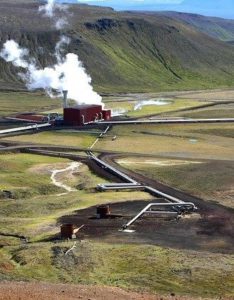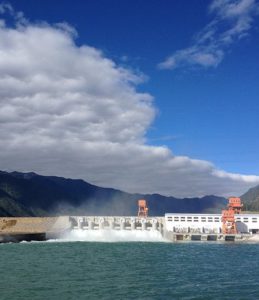Environmentalists and economists in favor of sustainability often support clean energy sources. Today, we are going to discuss what clean energy is and what its types are.
Definition
Clean energy, sometimes called renewable energy, is the energy that comes from sources that can be easily replenished and which has zero emissions. This means that there is no pollution or accruing waste, no consumption of finite goods, and no man-made disasters like oil spills in harnessing it. This is why we call it ‘clean energy’. Let us now talk about the common types of renewable energy.

Solar Energy
Solar energy comes from harnessing the power of the sun. Solar panels are set up in fields or on roofs to generate power. Alternatively, there are concentrating solar power plants, where mirrors concentrate the sun’s rays to move turbines and generate power. Places that get a lot of sunlight are perfect for solar ‘farms’.
Geothermal Energy
We don’t have to rely on a star for power when our planet will do just fine. Geothermal energy uses the heat produced by our very own Mother Earth. The energy is made the same way it is in a coal-processing plant. The rising heat turns the turbines and fills the batteries. The difference is that we don’t burn anything, but find places where Earth’s heat energy can be harnessed. It boils water and the steam does the rest.
Wind Power
Wind power is not new. Consider windmills. They have been around for centuries. Modern windmills are not used to grind grains, but to turn wind into electricity. The advantage of wind turbines is that they can work in cold environments, like Antarctica. Like solar energy, wind power relies heavily on the weather.

Hydropower
Using the natural movement of the water, we can create large quantities of energy. With a few dams and man-made lakes, the amount of power also increases. Parts of the dam are opened and the water flows out under pressure. This water hits the turbines. As long as rain works, so does hydropower.
Bioenergy
Despite it sounding like a crossover between the SF and horror genre, there is nothing freaky or dangerous about bioenergy. Its name stems from the fact that we use algae, compost, and food waste among other things, to create biomass. Unlike our other entries, it doesn’t generate electricity. It does, however, burn nicely, making it a great source of fuel and heat.
What About Nuclear Energy?
There are a few controversial ideas when it comes to other forms of clean energy. One of the biggest contenders is nuclear energy. Here’s the thing: if everything is done right, nuclear energy is truly clean as it makes no emissions and is pretty efficient. However, there is always a chance of another Chernobyl or Fukushima happening. Furthermore, nuclear waste can often be recycled but is sometimes stored underground. While its carbon footprint is virtually non-existent, the issue of radiation pollution and poisoning can’t be ignored.
